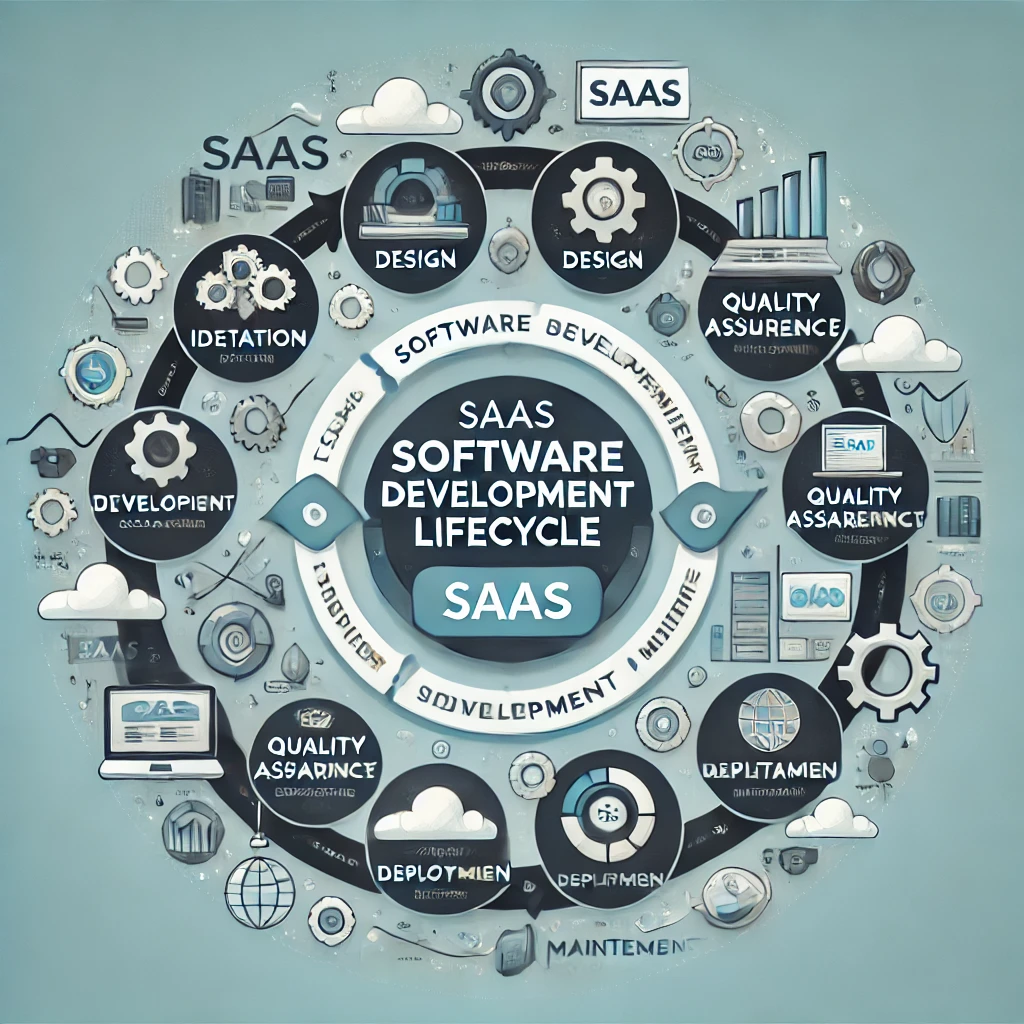science-technology

February 07,2025 • 6 min read
How to Optimize the SaaS Product Development Lifecycle for Success

The SaaS product development lifecycle is a structured approach that companies follow to create, launch, and optimize Software-as-a-Service (SaaS) applications. It is a continuous process that encompasses several stages, each with its unique challenges and requirements. To achieve success, businesses need to optimize each phase of the SaaS product development lifecycle, ensuring that every step contributes effectively toward building a high-quality, scalable, and profitable product. This article will explore strategies to optimize the entire SaaS product lifecycle to ensure your product reaches its full potential.
1. Understanding the SaaS Product Development Lifecycle
Before diving into optimization strategies, it's essential to understand the stages of the SaaS product development lifecycle. These stages are often broken down as follows:
- Ideation: The stage where the idea for the product is conceived. It includes market research, customer discovery, and defining the product's value proposition.
- Planning: This phase involves developing a product roadmap, setting goals, prioritizing features, and assembling the team.
- Design: Creating the user experience (UX) and user interface (UI) designs that align with user needs and business goals.
- Development: Building the actual software, including front-end and back-end development.
- Testing: Rigorous quality assurance (QA) testing to ensure the software functions as intended and is free from bugs.
- Deployment: The product is released to users, and infrastructure is set up for production environments.
- Maintenance and Iteration: After launch, the software must be maintained, and feedback must be gathered for continuous improvement.
The goal is to ensure that each phase is optimized to create a seamless transition from one stage to the next, reducing inefficiencies, time-to-market, and costs while maximizing the product's quality and success.
2. Optimizing the Ideation and Planning Phase
The ideation phase is the foundation of the SaaS product development lifecycle. It sets the tone for the entire project, and how well you plan during this stage significantly influences the product's outcome. Here's how you can optimize it:
- Market Research and Customer Insights: Use data-driven insights to identify pain points that your product can solve. Engaging directly with your target audience, conducting surveys, and studying competitor products can provide valuable feedback.
- Define Clear Goals and Objectives: Set specific, measurable, achievable, relevant, and time-bound (SMART) goals for the product. This will ensure that the team remains focused and aligned with the project’s long-term vision.
- MVP Approach: Focus on developing a minimum viable product (MVP), which allows you to test the core functionality of the product without building unnecessary features. This will save time and resources while providing valuable feedback from early adopters.
In the planning phase, create a detailed product roadmap, prioritize features based on user feedback and market demand, and estimate the necessary resources (budget, team size, technology stack). Collaborate with stakeholders to refine the requirements to ensure the product aligns with business objectives.
3. Optimizing the Design and Development Phase
Once the planning phase is completed, the next step is to create the product. To optimize the SaaS product development lifecycle during this stage, consider the following:
- Design with Users in Mind: A user-centric design approach is crucial for a successful SaaS product. User experience (UX) and user interface (UI) play a significant role in adoption rates. Ensure that the design is intuitive, visually appealing, and accessible across devices.
- Agile Development: Adopting Agile methodologies can greatly enhance development speed and flexibility. Agile breaks down the product development process into smaller, iterative cycles (sprints) where feedback is continuously incorporated.
- Involve Full-Stack Developers: Hiring full-stack SaaS application developers can significantly speed up the development process. These developers are proficient in both front-end and back-end development, allowing them to manage the entire development cycle and solve cross-disciplinary issues quickly.
- Focus on Scalability: As your SaaS product grows, it will need to handle increasing amounts of data and users. Invest time upfront to ensure your architecture is scalable, secure, and able to handle performance loads.
- Automation and Continuous Integration (CI): Implementing automation for testing, builds, and deployment ensures that you can quickly identify bugs, deploy new features, and maintain a smooth workflow.
The design and development phases are the heart of the SaaS product development lifecycle, and optimizing these areas ensures that the product meets user needs while staying within the project’s timelines and budget.
Read More: Case Study on Motel Management
4. Optimizing the Testing and QA Phase
Testing is critical to delivering a reliable, bug-free SaaS product. While it’s tempting to rush this phase, it's essential to optimize it to avoid issues down the line.
- Automated Testing: Automate as much of the testing process as possible. Automated tests for functionality, security, performance, and usability can detect potential issues early in the process, saving time and resources in the long run.
- User Acceptance Testing (UAT): Ensure that end-users participate in testing, providing real-world feedback. This will help uncover usability issues that might not be obvious to the development team.
- Performance and Load Testing: SaaS products often face unpredictable traffic. Load testing ensures that the product can handle large volumes of users without compromising performance.
By investing in thorough testing, you ensure that your product delivers on its promise and provides a great experience to your customers.
5. Optimizing the Deployment and Maintenance Phase
The deployment of your SaaS product marks the beginning of its lifecycle in the real world. This phase requires close attention to ensure a smooth rollout and continuous operation.
- Cloud Hosting: Leverage cloud infrastructure to ensure scalability, reliability, and flexibility. Services like AWS, Google Cloud, and Azure offer the necessary tools for efficient deployment.
- Monitor and Optimize Post-Launch: After deployment, constantly monitor the performance of the SaaS product using analytics tools. Track user engagement, feature usage, and server performance to identify areas for optimization.
- Rapid Iteration and Updates: The SaaS product lifecycle doesn't end at launch. It’s crucial to continuously update the product based on user feedback and market trends. The iterative nature of SaaS development ensures that your product remains competitive and aligned with evolving user needs.
6. Continuous Feedback and Improvement
A successful SaaS product is never “finished.” It requires continuous monitoring, feedback collection, and iterative improvements.
- Customer Support and Engagement: Provide exceptional customer support and continuously engage with users. Their feedback will help you identify pain points, gather feature requests, and improve the product over time.
- Feature Updates: Regularly release new features and updates to keep users engaged and satisfied. A strong feature release strategy can help maintain user retention and attract new customers.
- Data Analytics: Use analytics tools to track user behavior and product performance. This data is invaluable for understanding how users interact with the product and where improvements can be made.
By continuously improving the product, you can maintain a competitive edge in the marketplace.
Read More: Case Study On Learning Management System
kryoverseinnovation Details
User Profile
- Full name
- kryoverseinnovation
- Email address
- gijav74565@minduls.com
- Join Date
- 2025-02-07
- State
- City
- Pincode
- Address
- Follow us on Facebook
- Follow us on Twitter
- Website Name
- Bio